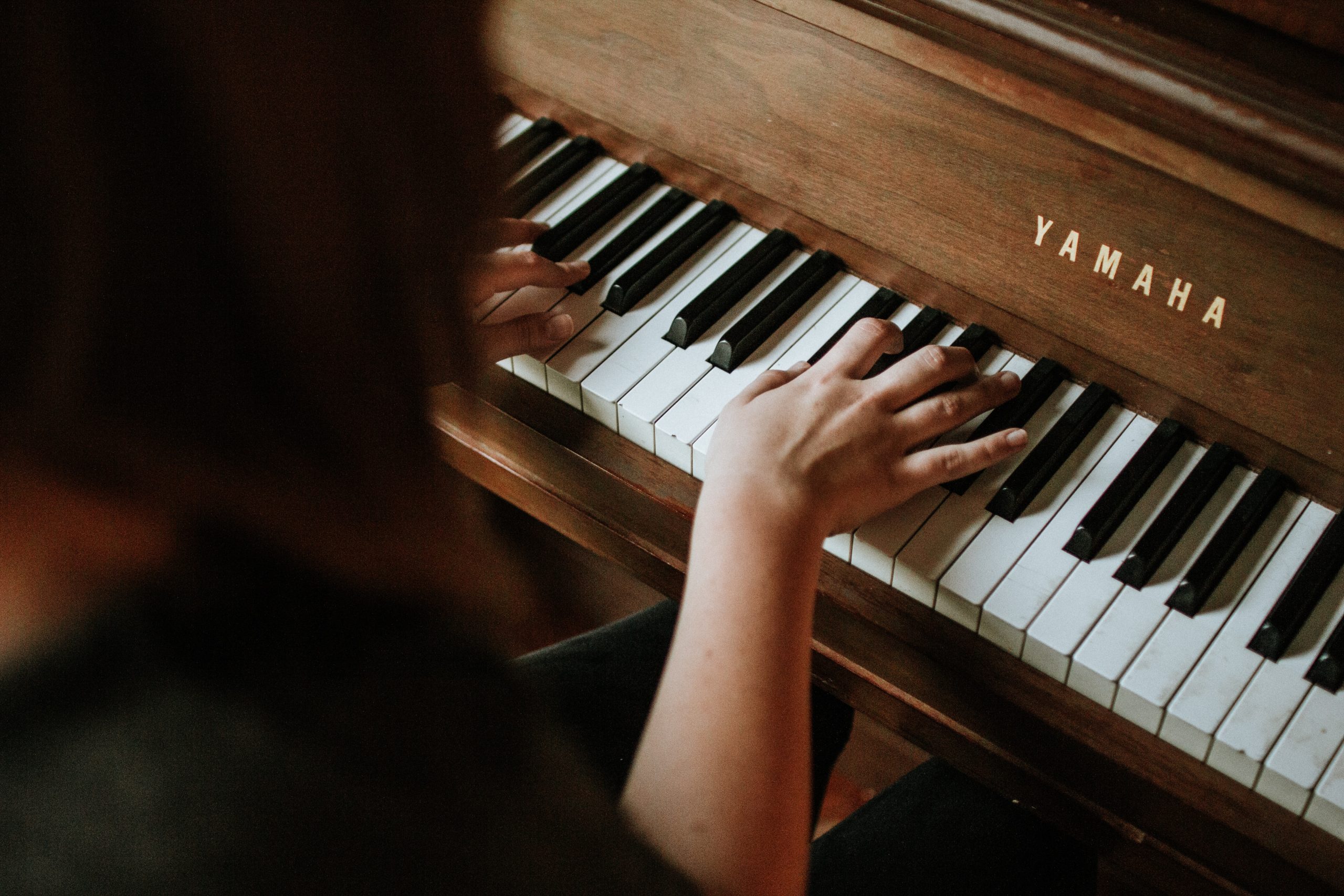Short Answer
To enhance the sound quality of your piano, there are several practical steps you can follow. Regularly tuning your instrument is fundamental, correcting the pitch and ensuring harmonious sound. It’s also crucial to have your piano professionally cleaned and serviced to prevent dust and debris from impacting the mechanics. Invest in a good quality piano cover to protect it from environmental factors such as humidity and temperature fluctuations. Lastly, consider the placement of your piano in the room; ensure it’s away from windows, doors, or vents, and if possible, place it against an interior wall to optimise acoustics.
Interesting Facts About Enhancing Piano Sound
Believe it or not, the manner in which a piano sounds can be greatly influenced by its environment, maintenance, and even the materials used in its construction.
Here are some fascinating facts:
- Piano Tuning: Pianos should ideally be tuned twice a year. Regular tuning not only improves sound quality but also extends the lifespan of the piano. For more about the importance of tuning, check out this article.
- Environmental Impact: Environmental factors, particularly temperature and humidity, can significantly affect the sound of your piano. For best results, keep your piano in a room where the temperature is consistently between 20-24°C and humidity levels are around 40-50%. Here’s why.
- Piano Placement: The positioning of the piano in a room also affects its acoustics. Pianos placed against an interior wall generally produce better sound. To learn more about optimal piano placement, read this guide.
- Regular Servicing: Regular professional cleaning and servicing can prevent damage to the intricate mechanics of a piano, thereby preserving its sound quality. This article explains the importance of regular servicing.
Strive to make your piano sound its best by considering these factors and maintaining a regular care routine.
Introduction
The melodious sound of a well-maintained piano can touch the soul and create an atmosphere that resonates with tranquility and harmony.
However, achieving this quality of sound requires knowledge, care, and dedication.
This comprehensive guide aims to provide you with essential insights on how to enhance your piano’s sound quality.
We will explore the anatomy of a piano, its placement, regular maintenance and tuning, cleanliness, playing techniques, timely repairs, effective use of pedals, and consider sound-enhancing accessories.
With this knowledge, you can transform the sound of your piano, creating harmonious melodies that captivate listeners.
Understanding the Anatomy of a Piano
Before we delve into making your piano sound better, it’s vital to understand its anatomy.
A piano is much more than a collection of keys and strings; it’s a meticulously crafted instrument with each component playing a significant role in producing the rich melodies we adore.
The key components include the soundboard, strings, hammers, dampers, and the piano action.
The soundboard amplifies the vibrations from the strings as they are struck by the hammers.
The dampers lift when you press a key, allowing the strings to vibrate, and subsequently return when the key is released, stopping the sound. The piano action, a complex mechanism of levers, connects the keys to the hammers.
Understanding these elements can provide a crucial foundation for enhancing your piano’s sound quality.
Proper Placement of Your Piano
The placement of your piano within a room can have a substantial impact on its sound.
The sound from a piano resonates in the space around it, so a piano placed against a wall may sound different to one placed in the middle of a room.
Additionally, an enclosed space can cause the sound to bounce and echo, while an open space allows the sound to spread out more evenly.
Practically, the best location for your piano is against an interior wall, away from direct sunlight, drafts, and heat sources such as radiators.
The stable temperature and humidity of this location help to maintain the instrument’s tuning and overall health.
Remember to allow space for the lid to lift if you have a grand piano, as this can also affect the sound.
Always try different locations in your room to find the spot where your piano sounds its best – it’s part of the journey of making the most of your instrument.
Regular Maintenance and Tuning
Regular maintenance and tuning are crucial for enhancing the sound quality of your piano.
Over time, the strings of a piano gradually lose their tension, leading to a drop in pitch and a less harmonious sound.
Regular tuning not only helps to correct pitch discrepancies but also contributes to the longevity of the instrument.
Tuning a piano requires a detailed understanding of its complex structure and should ideally be done by a professional tuner.
However, if you wish to attempt it yourself, be sure to have the correct tools – a piano tuning kit and a reference pitch source, such as a tuning fork or an electronic tuner.
Proceed with caution, as overly forceful adjustments can damage the strings or the piano action.
Aside from tuning, regular maintenance also includes cleaning the keys, dusting the interior, and periodically having the piano action regulated and voicing adjusted.
Remember, a well-maintained piano not only sounds better but also provides a more responsive and enjoyable playing experience.
Cleanliness and Care
Keeping your piano clean and dust-free is another essential step in preserving its sound quality.
Dust can accumulate over time on the keys, the soundboard, and other inner components, potentially affecting the instrument’s performance.
Regular cleaning with a soft, dry cloth is recommended for the keys, whilst a feather duster can be gently used for the interior parts.
Be sure to avoid chemical cleaners as they might damage the wood and other delicate parts of the instrument.
For the inside of your grand or upright piano, you might want to consider professional cleaning services since this requires a more detailed and technical approach.
But remember, a clean piano isn’t just visually pleasing; it also plays a role in maintaining a beautiful and consistent sound.
Addressing Necessary Repairs or Part Replacements
An essential aspect of piano maintenance is addressing necessary repairs or part replacements timely.
While minor issues like a sticky key or a squeaky pedal can be fixed at home with proper guidance, more significant issues like a broken hammer or a string should be addressed by a professional.
Ignoring these problems can lead to a decline in sound quality and could potentially cause further damage to the instrument.
Be proactive and regularly inspect your piano for any signs of wear and tear.
If a note sounds off, a key is harder to press, or if you notice any physical damage, it might be time to call in a professional.
It is better to fix small issues before they develop into larger, more costly problems. Remember, a well-maintained piano not only sounds superior but also lasts longer.
Effective Use of Pedals
The pedals at your feet, often overlooked, are instrumental in manipulating your piano’s sound.
There are typically two or three pedals on a piano – the soft pedal (or una corda), the sostenuto pedal, and the sustain pedal.
The soft pedal, found on the far left, is used to reduce the volume and slightly change the timbre by causing the hammers to strike fewer strings.
The sostenuto pedal, usually found on grand pianos, is capable of sustaining selected notes while allowing others to be played without sustain.
The sustain pedal, the most commonly used, allows the notes to continue to sound even after you’ve lifted your fingers from the keys.
Proper use of these pedals can add depth and expressiveness to your playing, making your music sound more professional and pleasing to the ear.
Skilful pedalling requires practice and a good understanding of the music you are playing.
Remember to use the pedals as tools to enhance the music and not as a crutch. A well-pedalled piano piece can enchant listeners, adding another level to your performance.
Exploring Different Styles and Genres
Another way to enhance the sound of your piano is by exploring different styles and genres of music.
Pianos are versatile instruments that can accommodate a wide range of musical styles, from classical to jazz, pop to blues.
Trying out different styles not only broadens your musical repertoire but also allows you to discover the various sounds, tones, and expressions that your piano can produce.
Experiment with pieces that have different tempos, dynamics, and rhythms.
This will challenge your technical skills and help you better understand the nuances of your instrument.
Be open to new musical experiences, as they can inspire creativity and add depth to your performance. Remember, a well-rounded pianist isn’t limited by genre or style – the beauty of music lies in its diversity
Incorporating Technology
Incorporating technology is another way to enhance the sound of your piano.
There are numerous digital tools and software available that can help you tune your piano, learn new pieces, or even compose your own music.
For instance, apps like GarageBand or Logic Pro X can be used for recording and editing, allowing you to experiment with different sound effects and mixing techniques.
For pianists interested in composition, software such as Finale or Sibelius can offer a comprehensive platform to write, arrange and print your music.
There are also a plethora of online learning resources and tutorial videos to help improve your technique, learn new styles, or understand complex theoretical concepts.
Embracing technology allows you to expand your musical horizons and maximise the potential of your instrument.
Remember, the piano is not just an acoustic instrument, but also a medium for creativity and expression in the digital age
Develop a Regular Practice Regime
A regular and disciplined practice regime is essential for any pianist looking to enhance the sound of their piano playing.
This includes not just the amount of time spent at the piano but also the quality and focus of each practice session.
A well-structured practice routine should incorporate scales and arpeggios to improve finger agility and strength, sight-reading to enhance musical comprehension, and performance pieces to refine interpretation and expression.
Remember to take breaks to prevent fatigue and maintain focus.
It’s often more beneficial to have several shorter sessions throughout the day than a single, extended one.
Practice mindfully, and remember that consistency is the key to progress and improvement.
A dedicated pianist understands that improvement comes with time, patience, and persistent effort.
Conclusion
In conclusion, enhancing the sound of your piano playing is not a singular action, but a combination of various elements.
Proper maintenance of the instrument, understanding the role of pedals, exploring different musical styles, incorporating technology, and adhering to a regular practice regime all contribute to the overall quality of your performance.
It’s a journey of continuous learning and improvement, requiring dedication and patience.
Ultimately, the beauty of playing the piano lies not just in the sound it produces, but also in the joy and fulfilness it brings to the pianist and their audience. So, continue to explore, learn and grow as a musician, and let your journey of piano playing be a rewarding and enriching experience.








